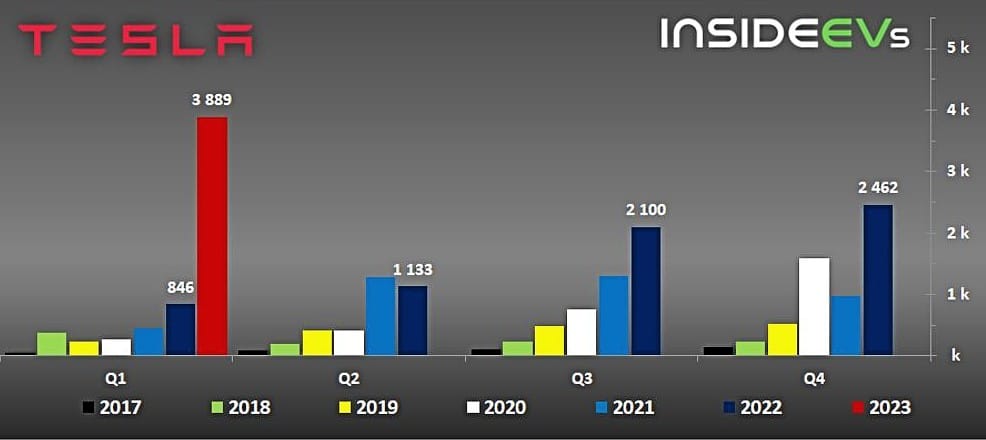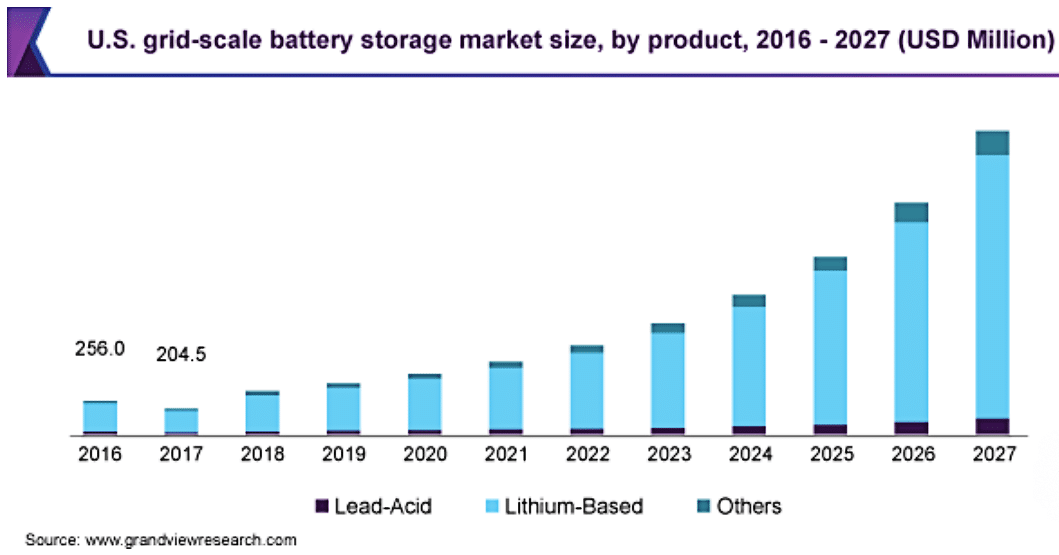Tesla has signed a contract worth $413 million to install its Megapack battery energy storage in two facilities in Massachusetts for a total capacity of 800 MWh.
Megapack is a large-scale, lithium-based battery energy storage designed by Tesla to boost the stability of power grids and avoid outages. Each unit boasts a storage capacity of over 3 MWh, enough to power 3,600 homes for an hour.
Tesla’s Battery Energy Storage Systems
Though Tesla’s energy storage segment is much smaller than its automotive business, it has been growing massively. After sustaining consistent growth, it has significantly accelerated and expanded rapidly.
According to Tesla, its energy generation and storage revenues went up 148% year-over-year to $1.5 billion in Q1 2023, representing 6.6% of the company’s total revenues. The company also reported that its battery energy storage systems (BESS) deployment was up 360% year-over-year for the same period. It hit a new quarterly record of 3,889 MWh or almost 4 GWh.
BESS includes Powerwall (residential), Powerpack (businesses), and Megapack (large-scale commercial and utilities projects) deployment. All three energy storage systems use lithium-ion batteries.
Tesla Battery Energy Storage Deployed (in MWh)

Such tremendous growth has been particularly attributed to ramping up Tesla’s Megapack production capacity in its recently built 40 GWh Megafactory in California. The company aims to produce 10,000 Megapacks each year in this factory.
Earlier this year, Tesla also revealed plans to construct another 40 GWh Megafactory in Shanghai, China to meet the robust demand for its energy storage systems. Construction will start later this year.
The demand in the U.S. alone has been rising sharply, with the most recent deal with Massachusetts.
Under the contract approved by the Massachusetts Energy Siting Facilities Board, the Megapacks will power two battery energy storage facilities in the state with 218 units. The decision will allow the state to meet 80% of its 1 GWh energy storage deployment target by 2025. The two facilities under the Massachusetts contract are as follows:
- Cranberry Point Energy Storage (developed and owned by Plus Power) – 150 MW/300 MWh BESS, with ancillary facilities in Carver, will serve the New England region.
- Medway Grid – 140 Tesla Megapacks on site, with a substation including a 300 MVA transformer.
Megapack was launched in 2019 and first used in California with PG&E’s Moss Landing project. The agreement included over 400 Tesla lithium-ion Megapack batteries for a massive energy storage system of up to 1.2 GWh.
Large-Scale Renewable Energy Solutions
The smaller BESS, Powerpacks, was first deployed on the small island of Nantucket in 2019. The island is about 30 miles off the coast of Massachusetts. Tesla built a 6 MW/48 MWh battery energy storage system in Nantucket with 234 Powerpacks.
The Powerpack storage can power half the homes on the island for up to 8 hours. To date, Tesla has deployed Powerwalls and Powerpacks at more than 50,000 sites worldwide.
The recent $413 million contract with Massachusetts is by far the largest Megapack project of Tesla, delivering a total of 800 MWh energy storage capacity. The previous large Megapack project was the Victoria Big Battery, a 212-unit, 350 MW system.
More Than Just an Electric Carmaker
The rising demand for Tesla’s Megapacks signals that there’s a big market for grid-scale battery energy storage solutions. In fact, this market is expected to grow at over 24% rate through 2027.
According to research, the market will grow to over $15 billion in 2027 as shown below.

The surge in the use and future demand for renewable energy will further lead to global grid-scale BESS market growth. As per the International Energy Agency’s estimates, renewables will account for over 90% of global electricity capacity expansion from 2022-2027.
With that, growth in energy storage systems should be quicker in areas where renewables are also growing faster than average. For Tesla Energy, that means its battery energy storage solutions like Megapack have a big room for growth.
This business, along with its solar panel installations, is part of Tesla’s quest for sustainability. All of these operations, including manufacturing EVs, generate carbon credits by avoiding carbon emissions. Selling these credits provided Tesla with billions of dollars in revenue.
In its recent Q2 2023 financial results, the giant automaker reported $282 million in carbon credit sales, with total revenue beating expectations at almost $25 billion, 50% higher than year-ago sales of around $17 billion.
The company’s clean energy segment, though it’s not comparable yet with its electric car production, will be one of its large revenue streams.
Megapack, in particular, offers a powerful grid-scale energy storage capacity that can be recharged using clean and renewable energy sources. It helps stabilize the local grid, promote sustainable energy infrastructure, and create a source of power that’s safe for the people and the planet.

